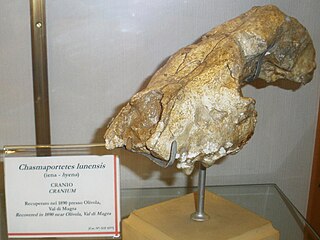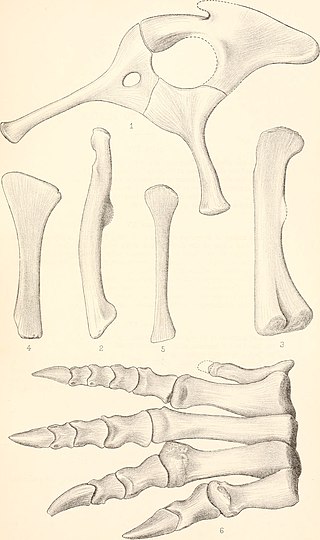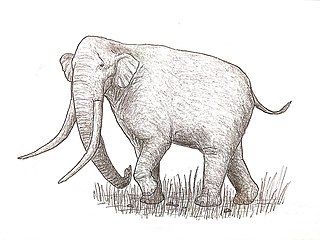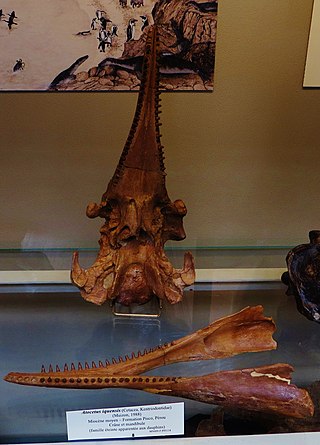
The earless seals, phocids, or true seals are one of the three main groups of mammals within the seal lineage, Pinnipedia. All true seals are members of the family Phocidae. They are sometimes called crawling seals to distinguish them from the fur seals and sea lions of the family Otariidae. Seals live in the oceans of both hemispheres and, with the exception of the more tropical monk seals, are mostly confined to polar, subpolar, and temperate climates. The Baikal seal is the only species of exclusively freshwater seal.

An eared seal, otariid, or otary is any member of the marine mammal family Otariidae, one of three groupings of pinnipeds. They comprise 15 extant species in seven genera and are commonly known either as sea lions or fur seals, distinct from true seals (phocids) and the walrus (odobenids). Otariids are adapted to a semiaquatic lifestyle, feeding and migrating in the water, but breeding and resting on land or ice. They reside in subpolar, temperate, and equatorial waters throughout the Pacific and Southern Oceans, the southern Indian, and Atlantic Oceans. They are conspicuously absent in the north Atlantic.

Dinofelis is an extinct genus of machairodontine, usually classified in the tribe Metailurini. It was widespread in Europe, Asia, Africa and North America from 5 million to about 1.2 million years ago. Fossils very similar to Dinofelis from Lothagam range back to around 8 million years ago, in the Late Miocene.
Langebaanweg is a town on the southwest coast of South Africa, in Western Cape Province.

Mellivora is a genus of mustelids that contains the honey badger or ratel (Mellivora capensis). It is also the sole living representative of the subfamily Mellivorinae. Additionally, two extinct species are known. The honey badger is native to much of Africa and South Asia, while fossil relatives occurred in those areas and Southern Europe.

Sparassodonta is an extinct order of carnivorous metatherian mammals native to South America, related to modern marsupials. They were once considered to be true marsupials, but are now thought to be a separate side branch that split before the last common ancestor of all modern marsupials. A number of these mammalian predators closely resemble placental predators that evolved separately on other continents, and are cited frequently as examples of convergent evolution. They were first described by Florentino Ameghino, from fossils found in the Santa Cruz beds of Patagonia. Sparassodonts were present throughout South America's long period of "splendid isolation" during the Cenozoic; during this time, they shared the niches for large warm-blooded predators with the flightless terror birds. Previously, it was thought that these mammals died out in the face of competition from "more competitive" placental carnivorans during the Pliocene Great American Interchange, but more recent research has showed that sparassodonts died out long before eutherian carnivores arrived in South America. Sparassodonts have been referred to as borhyaenoids by some authors, but currently the term Borhyaenoidea refers to a restricted subgroup of sparassodonts comprising borhyaenids and their close relatives.

Chasmaporthetes, also known as hunting or running hyena, is an extinct genus of hyenas distributed in Eurasia, North America, and Africa during the Pliocene-Pleistocene epochs, living from 4.9 million to 780,000 years ago, existing for about 4.12 million years. The genus probably arose from Eurasian Miocene hyenas such as Thalassictis or Lycyaena, with C. borissiaki being the oldest known representative. The species C. ossifragus was the only hyena to cross the Bering land bridge into the Americas, and ranged over what is now Arizona and Mexico during Blancan and early Irvingtonian Land Mammal ages, between 5.0 and 1.5 million years ago.

Gryponyx is an extinct genus of massopod sauropodomorph known from southern Free State, central South Africa.

Leptocleidus is an extinct genus of plesiosaur, belonging to the family Leptocleididae. It was a small plesiosaur, measuring only up to 3 m (9.8 ft).

Mammuthus subplanifrons is the oldest representative of the genus Mammuthus, appearing around 5 million years ago during the early Pliocene in what is today South Africa and countries of East Africa, especially Ethiopia. They already presented some of the unique characteristics of mammoths like the spirally, twisting tusks. It was 3.68 metres (12.1 ft) tall at the shoulder and weighed about 9 tonnes. In 2009, it was suggested that Loxodonta adaurora is indistinguishable from Mammuthus subplanifrons. However, other authors have continued to regard the species as distinct. Isotope analysis of specimens from South Africa suggests that M. subplanifrons was a flexible feeder.

The West Coast Fossil Park is a fossil park near Langebaanweg, Western Cape, South Africa, approximately 150 kilometres (93 mi) north of Cape Town. The fossil sites of Langebaanweg have exceptionally well-preserved remains of fossil fauna that date to circa 5.2 million years ago. In this period, sea levels were higher and many now extinct animals lived in the riverine forests, wooded savanna and along the sea coast near the present day Langebaanweg site. Phosphate mining operations at Langebaanweg uncovered these rich fossil deposits. The fossils include bones of over 200 different animal species. This represents possibly the greatest diversity of five-million-year-old fossils found anywhere in the world. The fossil park was formed after mining operations ceased in 1993. The park is partnered with the Iziko South African Museum.

Livyatan is an extinct genus of macroraptorial sperm whale containing one known species: L. melvillei. The genus name was inspired by the biblical sea monster Leviathan, and the species name by Herman Melville, the author of the famous novel Moby-Dick about a white bull sperm whale. It is mainly known from the Pisco Formation of Peru during the Tortonian stage of the Miocene epoch, about 9.9–8.9 million years ago (mya); however, finds of isolated teeth from other locations such as Chile, Argentina, United States (California), South Africa and Australia imply that either it or a close relative survived into the Pliocene, around 5 mya, and may have had a global presence. It was a member of a group of macroraptorial sperm whales and was probably an apex predator, preying on whales, seals and so forth. Characteristically of raptorial sperm whales, Livyatan had functional, enamel-coated teeth on the upper and lower jaws, as well as several features suitable for hunting large prey.

Nothrotheriidae is a family of extinct ground sloths that lived from approximately 17.5 mya—10,000 years ago, existing for approximately 17.49 million years. Previously placed within the tribe Nothrotheriini or subfamily Nothrotheriinae within Megatheriidae, they are now usually placed in their own family, Nothrotheriidae. Nothrotheriids appeared in the Burdigalian, some 19.8 million years ago, in South America. The group includes the comparatively slightly built Nothrotheriops, which reached a length of about 2.75 metres (9.0 ft). While nothrotheriids were small compared to some of their megatheriid relatives, their claws provided an effective defense against predators, like those of larger anteaters today.
Hadrokirus is an extinct genus of true seal (Phocidae) that lived on the coast of Peru and North Carolina about 6 million years ago. The type species, H. martini, was found in the Pisco Formation, together with other marine animals such as crustaceans, sharks, coastal birds, whales and aquatic sloths. The distinguishing feature of the seal was its teeth: they were extremely robust, hence the name. It is assumed that Hadrokirus martini was durophagous; its diet probably comprised crustaceans, small bivalves and other shelled animals, similar to that of the living sea otter. The living seals most closely related to Hadrokirus are the Antarctic seals.

The Pisco Formation is a geologic formation located in Peru, on the southern coastal desert of Ica and Arequipa. The approximately 640 metres (2,100 ft) thick formation was deposited in the Pisco Basin, spanning an age from the Middle Miocene up to the Early Pleistocene, roughly from 15 to 2 Ma. The tuffaceous sandstones, diatomaceous siltstones, conglomerates and dolomites were deposited in a lagoonal to near-shore environment, in bays similar to other Pacific South American formations as the Bahía Inglesa and Coquimbo Formations of Chile.

Atocetus is an extinct genus of pontoporiid dolphin found in Miocene-age marine deposits in Peru and California.

Pliophoca is an extinct genus of seal in the family Phocidae.
Auroraphoca is an extinct genus of earless seals from the early Pliocene of what is now the U.S. Eastern Seaboard.
Albrecht Manegold is a German ornithologist and paleontologist. He is the curator of the vertebrate collection at the State Museum of Natural History Karlsruhe. He is known for contributions to the study of early passerine evolution. He has described extinct passerines and piciformes including the fossil treecreeper Certhia rummeli and the fossil woodpecker Australopicus nelsonmandelai.


















